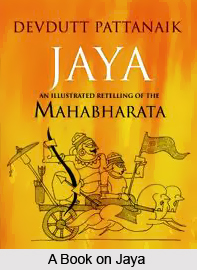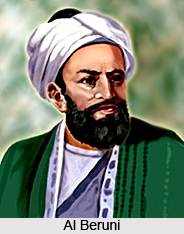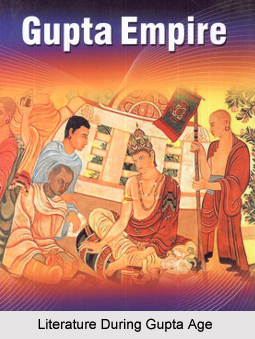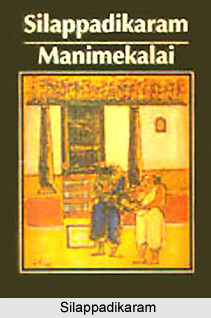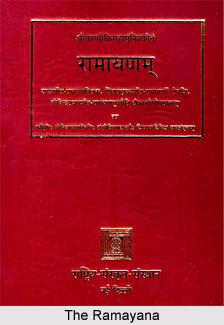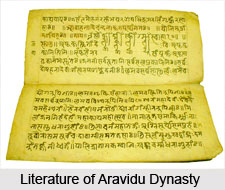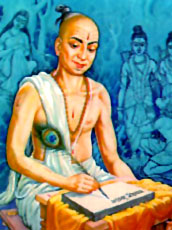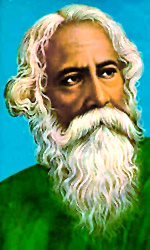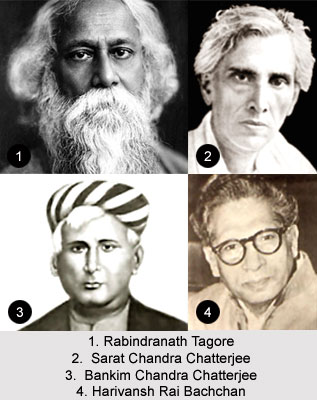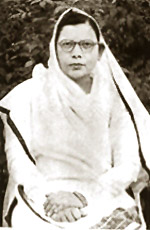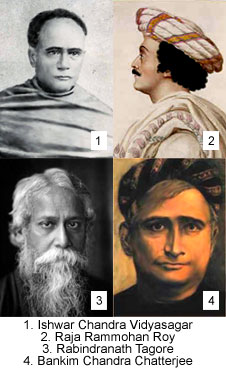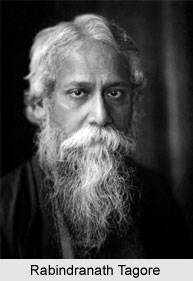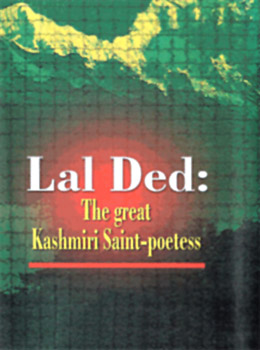 Kashmiri poetry can be traced back in its earliest form to the Kashmiri folk song and ballads. These songs and ballads are sung on a variety of occasions and cover almost all the aspects of life of the people. A Kashmiri sings when he tends to his herd, when he takes his flock of sheep and goats to pasture. He describes the Khaghu or Bahach (heavy duty transport boats) he plies on the lucid waters of the Vyath (Vitasta or Jhelum), which he calls the `River or Love`. He entertains himself with opera songs. A Kashmiri sings even when he is carrying a heavy load. The maids sing even when they wash clothes, or clean utensils, or grind corn or pound paddy or work in the fields. As a matter of a fact, Kashmiri women, unlettered mostly, have relieved the tedium of their life by finding in these songs a sincere echo of their emotions. A number of beautifully composed and heart rendering songs are sung during festive occasions, such as, Khutna ceremony, Zara Kasaye (Mundan) or Mekhela (Sacred Thread) ceremony.
Kashmiri poetry can be traced back in its earliest form to the Kashmiri folk song and ballads. These songs and ballads are sung on a variety of occasions and cover almost all the aspects of life of the people. A Kashmiri sings when he tends to his herd, when he takes his flock of sheep and goats to pasture. He describes the Khaghu or Bahach (heavy duty transport boats) he plies on the lucid waters of the Vyath (Vitasta or Jhelum), which he calls the `River or Love`. He entertains himself with opera songs. A Kashmiri sings even when he is carrying a heavy load. The maids sing even when they wash clothes, or clean utensils, or grind corn or pound paddy or work in the fields. As a matter of a fact, Kashmiri women, unlettered mostly, have relieved the tedium of their life by finding in these songs a sincere echo of their emotions. A number of beautifully composed and heart rendering songs are sung during festive occasions, such as, Khutna ceremony, Zara Kasaye (Mundan) or Mekhela (Sacred Thread) ceremony.
Most of the Kashmiri ballads have a legendary hero whose adventures and exploits form their main theme. These ballads throb with the very life of Kashmir. These are the word pictures of unsophisticated emotions, and in them are enshrined the relics of Kashmiri home-spun traditions. The period of their composition cannot be determined with any certainty but they seem to date back to several centuries past. Much of the old Kashmiri poetry is not extant and still less is known of early poets who composed and sang in their own mother tongue other than Sanskrit language.
The life of Kashmiri poetry may be divided into four periods. The first period may be taken to embrace (1) Giti Kantha (2) Lall and (3) Shiekh Noor-ud Din. The second period begins with Habba Khotan (Khatoon) and ends with Arinimal (Mrs. Bhawani Dass Kachru) and Prakash Bhat. The third period begins with Mahmud Garni and comes down to Azizullah Haqqani. The modern period of Kashmiri poetry may be taken separately to form the fourth period. Pirzada Ghulam Ahmad `Mahjoor` is the standard bearer of this period. This period may also be sub-divided into two parts: pre-independence (1925-1947 A.D) and Post-Independence (1947 A. D. onwards).
Early Kashmiri Poetry
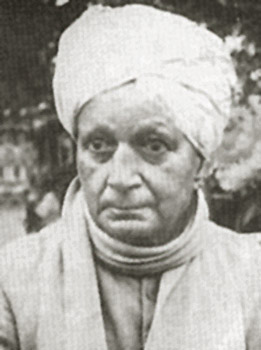 Kashmiri poetry is said to begin with the works of Lalleshvari or Lal Ded (14th century), who wrote mystical verses. Lal Ded is the first woman mystic to preach medieval mysticism in Kashmiri poetry. Her poetry is held to be the real gems of Kashmiri poetry. The mysticism in her poetry makes her proclaim that the dissolution of the self by the Sadhaka is essential for the Realisation. It requires a certain mental attitude where the differences between the God and the self are dissolved completely. Lal Ded used the medium of metaphors, riddles etc in her poems. Another mystic of the time who was also greatly revered is Nunda Rishi, who is known as Sheikh Nur-ud-Din alias Sahajanand. He wrote powerful poetry and gave much importance to breath control practices in yoga as a means of communion with God.
Kashmiri poetry is said to begin with the works of Lalleshvari or Lal Ded (14th century), who wrote mystical verses. Lal Ded is the first woman mystic to preach medieval mysticism in Kashmiri poetry. Her poetry is held to be the real gems of Kashmiri poetry. The mysticism in her poetry makes her proclaim that the dissolution of the self by the Sadhaka is essential for the Realisation. It requires a certain mental attitude where the differences between the God and the self are dissolved completely. Lal Ded used the medium of metaphors, riddles etc in her poems. Another mystic of the time who was also greatly revered is Nunda Rishi, who is known as Sheikh Nur-ud-Din alias Sahajanand. He wrote powerful poetry and gave much importance to breath control practices in yoga as a means of communion with God.
Second Period of Kashmiri Poetry
For a long time after the death of the mystic poets, poetry was on a downhill in Kashmiri literature. It re-emerged with Habba Khatoon. The kind of poetry she write was chiefly romantic. Up to her time poets were expected to sing the love of God but she sang of human love. She talks of personal and substantive love as opposed to the earlier form of "transcendental passion". Her own personal experiences, of a failed marriage and love story, were significant influences in the emotional content of her poetry. A century later another lady, named Arnimal, wrote similarly moving poetry. Her own stories of desertion filled her poems with rich imagery and pathos. The poems were Habba Khatoon and Arnimal, were the only ones in Kashmiri poetry which spoke about issues from a feminine viewpoint.
Third Period of Kashmiri Poetry
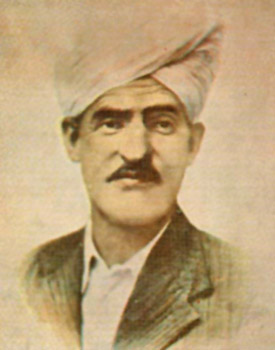 During this time, Kashmiri poetry moved away from Persian influences and in the period from 1819 to 1890 was the period when Kashmir produced poetry both rich and prolific. Devotional poetry made a comeback and one of the greatest exponents during this time was Pandit Parmanand. He expressed his devotion for Lord Krishna in sweet and direct diction. His simple poems have a great metaphysical quality. Shams Fakir was another deeply religious man who wrote poetry which was simple and direct, tinged with his Sufi-teachings. Wahab Khar was also a Sufi of his type, who also quoted and expressed his simple teachings in simple Kashmiri language. One of the earliest poets who follow the Persian pattern is Mohammad Garni. He wrote romances like Yusuf Zulaikha, Laila Majnu, Shirin Khusru, etc. His descriptions are trite and graphic. There is a certain quality of passion which separates his poetry from the rest. Another major poet of the time was Maqbul Shah Kralwari. He wrote a Romantic poem, Gulrez. Though its theme is Persian, the scenes are typically Kashmiri. He is famous for his lyrical poetry in which he describes nature beautifully. Rasul Mir, another great lyrical poet, is considered the father of Kashmiri ghazal. His remarkably crafted poems are characterised by passion, abandon, exquisite verbal melody and spontaneity of utterance.
During this time, Kashmiri poetry moved away from Persian influences and in the period from 1819 to 1890 was the period when Kashmir produced poetry both rich and prolific. Devotional poetry made a comeback and one of the greatest exponents during this time was Pandit Parmanand. He expressed his devotion for Lord Krishna in sweet and direct diction. His simple poems have a great metaphysical quality. Shams Fakir was another deeply religious man who wrote poetry which was simple and direct, tinged with his Sufi-teachings. Wahab Khar was also a Sufi of his type, who also quoted and expressed his simple teachings in simple Kashmiri language. One of the earliest poets who follow the Persian pattern is Mohammad Garni. He wrote romances like Yusuf Zulaikha, Laila Majnu, Shirin Khusru, etc. His descriptions are trite and graphic. There is a certain quality of passion which separates his poetry from the rest. Another major poet of the time was Maqbul Shah Kralwari. He wrote a Romantic poem, Gulrez. Though its theme is Persian, the scenes are typically Kashmiri. He is famous for his lyrical poetry in which he describes nature beautifully. Rasul Mir, another great lyrical poet, is considered the father of Kashmiri ghazal. His remarkably crafted poems are characterised by passion, abandon, exquisite verbal melody and spontaneity of utterance.
Modern Kashmiri Poetry
Ghulam Ahmad Mahjoor`s poetry brought about a Renaissance in Kashmiri literature. He had come into close contact with the downtrodden peasants and villages who were being exploited by the feudal system, and he passionately takes up their cause in his poetry. He was also a strong supporter of Hindu Muslim unity, as he believed that all Kashmiri people were characterized by high principles of brotherhood, tolerance and communal amity. He even wrote beautiful nature poetry as can be seen in his work Gulshan Vattan Chu honey (Our Land is a Lovely Garden) where he sings of the beauty of nature. The simple language of his poems and the lyrical sweetness made his poems extremely popular. Mahjoor was followed by Abdul Ahad Azad who too like him took to revolutionary ideas, though he demanded a socialist type of society as opposed to Mahjoor`s nationalism. Men like Zinda Koul, better known as "Master ji", wrote about issues like love, freedom and happiness. He believes in the supremacy of the spirit over reason. After the formation of the people`s government following Independence, there was the rise of a new batch of poets who idealized socialistic realism as an all-pervasive literary value. They became the people`s voice in expressing their concern against aristocratic exploitation, corruption and imperialist designs on the valley of Kashmir. They experimented with new forms and new themes. The leader of this progressive group, as it came to be known, was Dina Nath Nadim. He was the most significant poet of the new generation. He influenced many poets. Abdul Rehman Rahi is significant among them. Rahi also is a poet of revolution and wrote some propagandist poems. He introduced two new things into Kashmiri poetry- the monologue and the symbolist technique. Mirza Arif is another great modern poet of Kashmir. Though he does not belong to the group of socialist poets, he, too, has reflected on the different facts of social and political life in Kashmir and he writes about exploitation, hypocrisy and falsehood. Other modern poets of Kashmir include Mohammad Amin Kamil, Noor Mohammad Roshan, Ghulam Nabi Firaq and Moti Lal Saqi etc.
